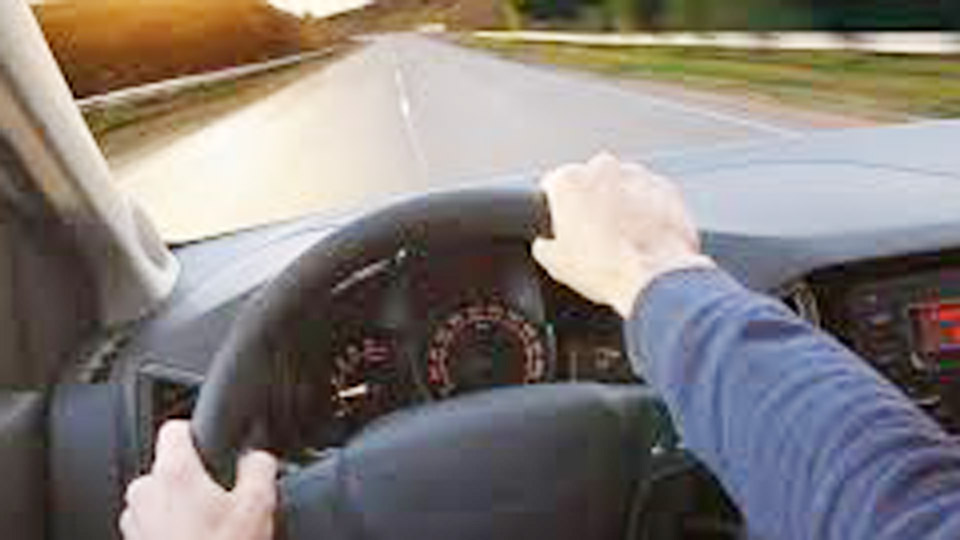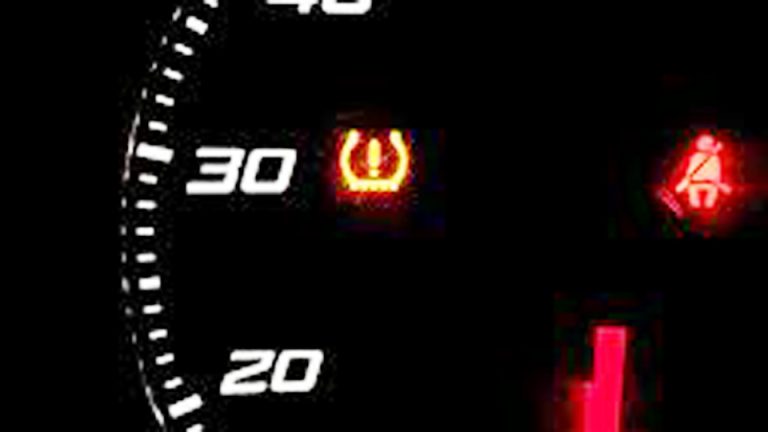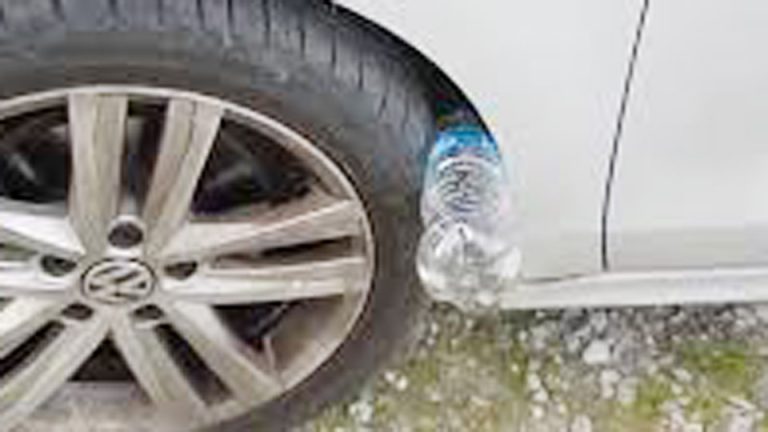I’ll never forget the first time I felt my car wheel shaking when I drove my old Subaru down the highway. It started as a slight wobble in the steering wheel, but by 60 mph, it felt like the whole car was vibrating. My heart sank, wondering if I was facing a major repair.
As someone who’s spent years tinkering with cars and helping friends diagnose issues, I’ve learned that a shaky wheel is often a straightforward fix. Let’s dive into why your car wheel is shaking when you drive and how to fix it, like we’re troubleshooting together in my driveway.

Image by mavis
What Causes a Shaky Wheel?
When your car’s wheel shakes, it’s usually a sign of an issue with the tires, wheels, or suspension. The vibration can feel like a wobble in the steering wheel, a shimmy through the seat, or even a shudder when braking. I’ve dealt with this on my Subaru and my brother’s Jeep, and each time, it was about pinpointing the source.
The shaking often worsens at specific speeds or during certain actions, like braking or turning, which gives clues to the problem. Let’s explore the most common causes I’ve seen and how to identify them.
Why Shaking Happens When Driving
Driving puts stress on your car’s wheels and suspension, especially at higher speeds. A small imbalance or wear can amplify into noticeable vibrations. My Subaru’s shaking was worst between 50 and 60 mph, pointing to a tire issue. Noticing when the shaking happens—high speeds, braking, or turning—helps narrow down the cause.
Common Reasons Your Wheel Shakes
Here are the culprits I’ve encountered most often, based on my own repairs and helping friends. Each has distinct symptoms to help you diagnose the issue.
Unbalanced Tires
Tires that aren’t balanced properly can cause a shaky wheel, especially at highway speeds. After getting new tires on my Subaru, I noticed a vibration around 55 mph. A quick trip to the shop revealed the tires weren’t balanced correctly during installation. Balancing involves adding small weights to the wheel to ensure even rotation.
Why it matters: Unbalanced tires wear unevenly and strain your suspension. Regular balancing, every 10,000-12,000 miles, keeps your ride smooth.
Misaligned Wheels
Wheel alignment issues can make your car pull to one side or vibrate. I hit a pothole once, and my Subaru started shaking at higher speeds. A mechanic confirmed the alignment was off, causing uneven tire wear. An alignment service fixed it, and the shaking stopped.
Why it matters: Misaligned wheels accelerate tire wear and affect handling. Regular alignment checks, especially after hitting rough roads, prevent this.
Worn or Damaged Tires
Worn or unevenly worn tires can cause vibrations. My friend’s SUV shook because one tire was nearly bald on the inner edge. Inspecting the tread showed uneven wear, likely from poor alignment or underinflation. Replacing the tire and aligning the wheels solved it.
Why it matters: Damaged tires reduce traction and safety. Check tire tread monthly and replace tires that are worn or damaged.
Warped Brake Rotors
If your wheel shakes when braking, warped brake rotors are often the culprit. I noticed this on my wife’s car—the steering wheel wobbled when slowing down. The rotors had warped from heavy braking in traffic. Replacing them restored smooth braking.
Why it matters: Warped rotors reduce braking efficiency and can damage other brake components. Fix them promptly for safety.
Worn Wheel Bearings
Wheel bearings allow your wheels to spin smoothly. When they wear out, they cause a humming or grinding noise and shaking, especially during turns. My brother’s Jeep had this issue—a bad bearing caused a wobble at 40 mph. Replacing it fixed the problem.
Why it matters: Failing bearings can lead to wheel detachment, a serious safety risk. If you hear humming, get it checked immediately.
Loose or Damaged Suspension Components
Loose ball joints, tie rods, or bushings can cause shaking, especially in older cars. I helped a neighbor with a truck that vibrated over 45 mph. A loose tie rod end was the issue, and tightening it stopped the shaking.
Why it matters: Worn suspension parts affect steering and stability. Regular inspections catch these issues early.
Diagnosing the Shaking
Finding the source of the vibration takes some detective work. Here’s how I approach it, based on my garage sessions.
Pay Attention to the Symptoms
Note when the shaking happens. Does it start at high speeds, like 55-70 mph, as with my Subaru’s tire imbalance? Is it only when braking, like my wife’s warped rotors? Or does it happen during turns, suggesting bearings? I drive in a quiet area, like a parking lot, to isolate the vibration’s pattern.
Inspect Tires and Wheels
Check tire pressure and tread for uneven wear. I use a tread depth gauge to ensure my tires are safe. Jack up the car (use jack stands for safety!) and wiggle each wheel. If it moves side-to-side, it’s likely a tie rod or ball joint. If it wobbles up and down, suspect a bearing. My Jeep’s bearing issue showed up this way.
Test the Brakes
If the shaking happens when braking, test in a safe area. I drove my wife’s car slowly and applied the brakes gently. The steering wheel wobbled, pointing to the rotors. If you feel vibrations through the brake pedal too, it’s likely a brake issue.
Check for Noise
Listen for sounds like humming or grinding. My brother’s Jeep had a low hum that got louder during turns, a classic wheel bearing symptom. Drive at different speeds and note any noises to share with a mechanic.
Fixing the Shaking Wheel
Once you’ve identified the cause, here’s how I’ve tackled these issues, with practical tips for each.
Balancing Tires
Take your car to a shop for tire balancing, which costs $20-$50. I had my Subaru’s tires balanced after new ones were installed poorly. The mechanic used a machine to add weights, and the shaking vanished. Rotate tires every 5,000-7,500 miles to prevent imbalances.
Why it matters: Balanced tires ensure a smooth ride and prolong tire life. It’s a quick, affordable fix.
Aligning Wheels
A wheel alignment, costing $50-$100, fixes misaligned wheels. After hitting that pothole, I got my Subaru aligned, and the vibration stopped. Schedule alignments yearly or after rough roads to prevent shaking.
Why it matters: Proper alignment improves handling and extends tire life. It’s a routine fix that saves money long-term.
Replacing Worn Tires
If tires are worn or damaged, replace them. A new set for my friend’s SUV cost $400, but it stopped the shaking and improved safety. Check tire pressure monthly (use the car’s recommended PSI) to avoid uneven wear.
Why it matters: Fresh tires restore traction and eliminate vibrations. Don’t skimp on quality for safety.
Replacing Warped Brake Rotors
Warped rotors need replacement, costing $100-$300 per axle. I helped my wife replace hers, and the braking became smooth again. If caught early, rotors can sometimes be resurfaced, but shaking usually means replacement.
Why it matters: Smooth rotors ensure safe braking. Delaying can damage brake pads and calipers.
Replacing Wheel Bearings
Bad bearings require replacement, costing $50-$150 DIY or $200-$400 at a shop. I helped my brother swap a bearing on his Jeep, a tough job requiring a press. Unless you’re experienced, let a mechanic handle it.
Why it matters: New bearings prevent wheel failure and keep your car stable. Act fast if you hear grinding.
Tightening or Replacing Suspension Components
Loose tie rods or ball joints can be tightened or replaced ($20-$60 each). I fixed my neighbor’s truck by tightening a tie rod end, but worn parts need new ones. An alignment is needed after to avoid tire wear.
Why it matters: Tight suspension parts ensure safe steering. Regular checks catch issues early.
Comparison of Shaking Causes and Fixes
Here’s a table I use to explain these issues to friends, based on my experience.
| Cause | Symptoms | Fix | Cost (DIY) | Difficulty |
|---|---|---|---|---|
| Unbalanced Tires | Shaking at 55-70 mph | Balance tires | $20-$50 | Easy |
| Misaligned Wheels | Pulling, shaking at high speeds | Wheel alignment | $50-$100 | Easy |
| Worn/Damaged Tires | Vibration, uneven tread wear | Replace tires | $100-$200/tire | Moderate |
| Warped Brake Rotors | Shaking when braking | Replace rotors | $50-$150/axle | Moderate |
| Worn Wheel Bearings | Humming, shaking during turns | Replace bearings | $50-$150 | Hard |
| Loose Suspension Parts | Shaking over 45 mph, loose steering | Tighten or replace parts | $20-$60/part | Moderate |
This table helps prioritize fixes based on symptoms and budget. It’s a quick guide for deciding what to tackle first.
Preventing Car Wheel Shaking
Prevention is easier than repairs. Here’s what I do to keep my cars steady.
Regular Tire Maintenance
Check tire pressure monthly and rotate tires every 5,000-7,500 miles. I caught low pressure on my Subaru early, avoiding shaking. Balance tires every 10,000-12,000 miles to prevent imbalances.
Avoid Rough Roads
Potholes and curbs can misalign wheels or bend rims. I hit a pothole once and paid for an alignment later. Drive carefully, especially on rough roads, to protect your wheels.
Inspect Suspension and Brakes
Check suspension and brakes during oil changes (every 5,000-7,500 miles). I spotted a loose tie rod on my truck this way, fixing it before it caused shaking. Regular inspections catch issues early.
Why I Love Solving Car Problems
Figuring out why a car shakes is like solving a puzzle. When I fixed my Subaru’s tire imbalance, I felt like a detective cracking a case. It’s not just about saving money—though I’ve saved plenty—it’s about keeping my car reliable and safe. Helping friends with their cars feels even better, like passing on a bit of confidence.
Get Your Smooth Ride Back
A shaking car wheel can be unsettling, but it’s often a fixable issue. Whether it’s unbalanced tires, warped rotors, or worn bearings, I’ve tackled these problems and learned they’re manageable with the right approach.
Start by noting when the shaking happens, inspect your tires and brakes, and try the fixes I’ve shared. You’ll save money and drive with peace of mind. Grab a tire gauge or head to a trusted mechanic—you’ll be back to smooth cruising in no time!
Read More on Car Shakes when driving
Frequently Asked Questions
What’s the most common reason my car shakes when driving?
Unbalanced tires are often the cause, especially at highway speeds. I fixed this on my Subaru with a $30 balancing service, and the vibration stopped.
Why does my steering wheel wobble when I brake?
Warped brake rotors are likely the issue. I had this with my wife’s car—replacing the rotors fixed the shaking and improved braking safety.
Is it safe to drive with a shaking wheel?
It depends. Minor tire imbalances are less urgent, but bad bearings or loose suspension parts can be dangerous. I drove a week with a shaky tire, but got it fixed quickly to avoid risks.
How much does it cost to fix a shaky wheel?
Costs vary—tire balancing is $20-$50, alignments are $50-$100, and bearings can be $50-$150 DIY. I saved by balancing my tires early, avoiding bigger repairs.
How can I prevent my car from shaking again?
Regular tire rotations, pressure checks, and alignments help. I check my tires monthly and avoid potholes, which has kept my cars steady for years.




